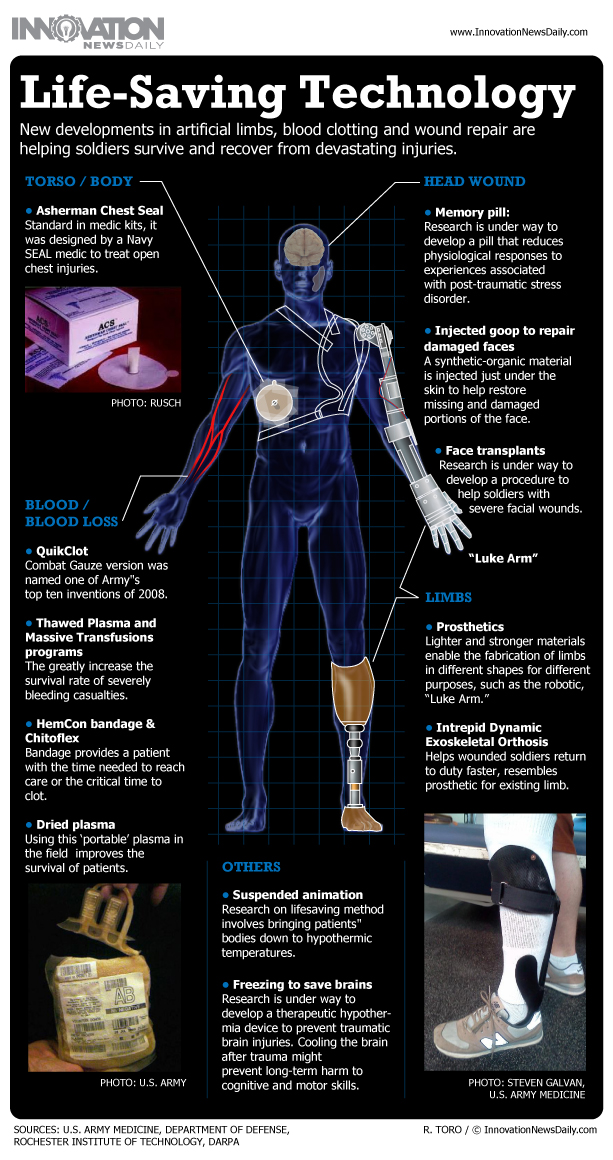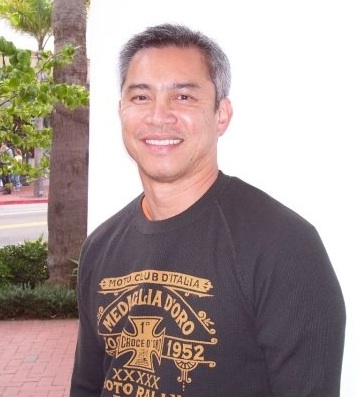How New Military Medical Advancements Save Lives (Infographic)

New developments in artificial limbs, blood clotting and wound repair are helping soldiers survive and recover from devastating injuries.
Head wound:
• Memory pill: Research is under way to develop a pill that reduces physiological responses to experiences associated with post-traumatic stress disorder.
• Injected goop to repair damaged faces: A synthetic-organic material is injected just under the skin to help restore missing and damaged portions of the face.
• Face transplants: Research is under way to develop a procedure to help soldiers with severe facial wounds.
Torso/body:
• The Asherman Chest Seal is standard in medic kits, it was designed by a Navy SEAL medic to treat open chest injuries.
Get the world’s most fascinating discoveries delivered straight to your inbox.
Blood loss:
• QuikClot/Combat Gauze version was named one of Army’s top ten inventions of 2008.
• Thawed Plasma and Massive Transfusions programs: The greatly increase the survival rate of severely bleeding casualties.
• HemCon bandage & Chitoflex: Bandage provides a patient with the time needed to reach care or the critical time to clot.
• Dried plasma: Using this ‘portable’ plasma in the field improves the survival of patients.
Limbs:
• Prosthetics: Lighter and stronger materials enable the fabrication of limbs in different shapes for different purposes, such as the robotic, “Luke Arm.”
• Intrepid Dynamic Exoskeletal Orthosis: Helps wounded soldiers return to duty faster, resembles prosthetic for existing limb.
Other:
• Suspended animation: Research on lifesaving method involves bringing patients" bodies down to hypothermic temperatures.
• Freezing to save brains: Research is under way to develop a therapeutic hypothermia device to prevent traumatic brain injuries. Cooling the brain after trauma might prevent long-term harm to cognitive and motor skills.

 Live Science Plus
Live Science Plus





